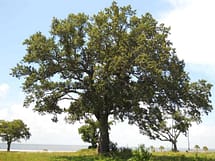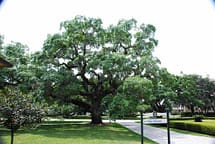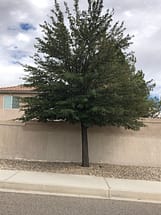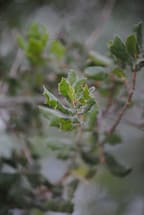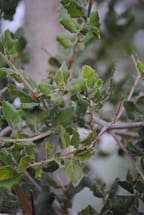All pricing and availability is subject to change
Pricing:
1 gallon – $10
5 gallon – $35
15 gallon – $70
24″ box – $200
Details and Care Information:
Sunset Zones: 7-9, 14-24
USDA Hardiness Zones: 8-10
Sun Exposure: Full Sun to Partial Shade
Soil: Highly Acidic to Slightly Alkaline
Drought Tolerance: Drought Tolerant
Growth Rate: 24″ per year
Growth Habit: Rounded or Umbrella Shape.
Height: 20-70ft.
Width: 20-70ft.
Evergreen or Deciduous: Evergreen
Longevity: Greater than 150 years
Litter Issue: Dry fruit (Acorns)
Pests and Diseases: Resistant to Verticillium. Susceptible to Invasive Shot Hole Borer, Goldspotted Oak Borer, Aphids, Beetle Borers, Beetle Grubs, Caterpillars, Coddling Moths, Insect Galls, Scales and White Fly, Sudden Oak Death, Crown Rot, Mistletoe, Armillaria, Phytophthora, Powdery Mildew, Root Rot and Sooty Mold. Oaks are susceptible to several pests and diseases including Gold Spotted Oak Borer and Sudden Oak Death. The best prevention for these maladies is to avoid moving firewood outside the area where it was grown and sterilizing pruning instruments after each use.
Branch Strength: Strong
Root Damage Potential: Moderate to Low
Suckering Potential: Low
Salt Tolerance: Moderate
Special Care: Do not water in Summer or you can cause root rot.
Pruning Advice: Best to prune during July or August, when the trees are not normally growing, and when the dry weather is less likely to support pathogens that may attack the wounds. As much as possible, avoid pruning large limbs as this exposes the tree to possible infection and can take many years to recover. Avoid over-thinning interior branches or “lion tailing.”
Watering Advice: Coast Live Oaks are fairly easy to grow. Water 1 time per week the first year after planting, decreasing to about 1 time per month after the first year, until the tree is about 10 feet tall. After that, it’s best to avoid direct summer water entirely. In areas with less rainfall, best to plant Coast Live Oaks near an irrigated area. They’ll get the water they need by stretching their roots out to the wetter area, but they’ll keep the area close to their trunk nice and safely dry. Once they get their roots into the wetter areas, they’ll grow rapidly and stay healthy looking all year round. Coast Live Oaks prefer to have their roots shaded, so it’s a good idea to surround young specimens with mulch, rocks, or smaller native plants that won’t crowd out the young tree trees but will provide shade to the roots
Staking: These trees don’t typically need staking as their leaf mass does not create a top heavy canopy.
Fertilizer: Don’t fertilize oaks. They’ll amend the soil over time with their own leaves and build the natural mycorrhizal fungus in the soil they need to thrive. Gradually, they become islands of natural fertility that improve the health of the nearby plants.
Microclimate: – What is a Microclimate?
Live Oak – Quercus Agrifolia
